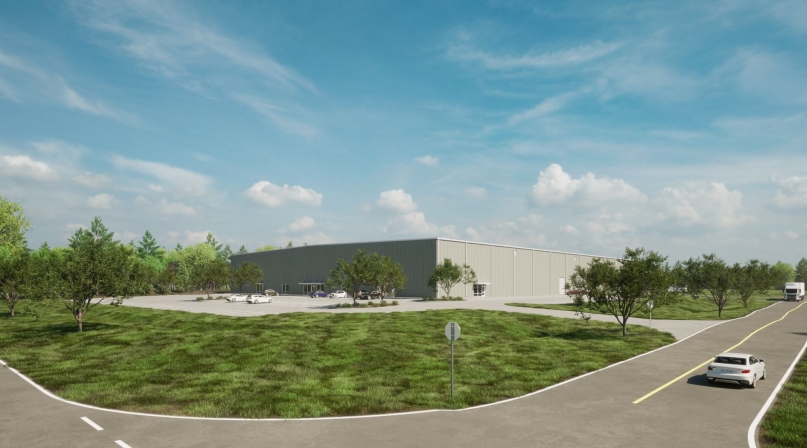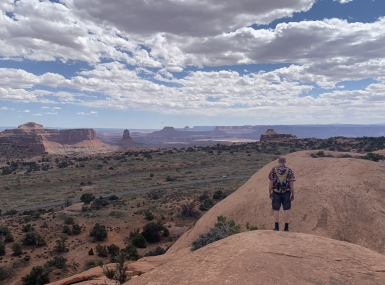North Carolina county shell building program draws new businesses

Key Takeaways
The term “blank canvas” often doesn’t give enough credit to the canvas.
A painter can only start working once the fibers have been woven tightly and stretched over a wooden frame that requires the same meticulous workmanship.
The same goes for empty structures that Nash County, N.C. builds. So far, the county has raised and sold five shell buildings, ranging between 40,000 square feet and 100,000 square feet. Another is being planned. While the insides might not be much to look at for many — the floors are dirt — so far, businesses have liked what they’ve seen, drawing a food processing company, an agriculture business and a life science company.
“A lot of times, you’ll drive out in the country and see a shell building standing there and nothing’s happening,” said Andy Hagy, Nash County’s director of economic development. “It’ll sit there for 10 years, and it becomes a big white elephant for all the local residents. Construction companies tell these rural counties, ‘If you build it, they will come,’ but it’s a little more complicated than that. Their business model has to work without all the freebies.”
Now Nash County is selling buildings well before they’re completed.
Nash County Commissioner Chair Robbie Davis is himself an experienced real estate developer, and he reflected on the economic development arms race that has brewed on the county level.
“Ten years ago, economic development basically consisted of saying ‘We’re open for business,’ and trying to attract a little interest in potential businesses,” he said. “Then you had to have some land that’s ready to sell, then it has to be ready to build. Now we’re helping businesses picture themselves in Nash County with a finished building. It’s just gotten more aggressive and more aggressive as more people chase industries.”
The work that goes into finding the right site for the buildings is just as crucial as the steps creating a canvas. In both cases, it’s up to the customer to create from there. Hagy is loathe to give up his specific strategies for selling businesses on the county’s buildings — his first duty is to Nash County’s competitiveness, after all — but he does have some general advice for counties trying the same thing.
“If you don’t have a pro-business, pro-economic-development Board, you aren’t going anywhere, no matter what staff recommends,” he said. “If you aren’t in the middle of a metropolitan area, a lot of times, the county has to do their own business park development; you can’t wait on somebody else to take charge.”
Counties either need tax revenue in the bank to finance construction, or they need favorable rates on loans from local banks, as Nash County had. When the buildings sell, Hagy said, the proceeds go right into the next building.
The infrastructure leading to the building, including roads and utilities, should be at least concurrent with construction, if not ahead.
“We had a building without finished roads, but as soon as we paved it and built the curbs, we were able to find a buyer,” Hagy said.
Nash County designs its buildings to be expanded to twice their initial size, giving buyers flexibility.
“We’re starting to get more interest from developers who are interested in large speculative buildings of their own to attract tenants.
“We have 500 acres of industrial land in three business parks, so there’s room for private development,” Hagy said. “Two of the building sites can accommodate up to 1 million square feet.”
Davis and Hagy acknowledge that Nash County’s proximity to I-95 and the Research Triangle (Raleigh, Durham and Chapel Hill) makes their county attractive for a lot of businesses.
“We have one business park that’s fractions of a mile from I-95,” Hagy said. “It’s the kind of place that’s ideal for logistics or distribution.”
Despite receiving a letter of intent for one building before the steel was delivered to build it, Hagy protests that it isn’t like shooting fish in a barrel.
The most Hagy would divulge from his repertoire was to be creative at marketing business parks.
“We’re not in the business of building buildings, it’s all toward the goal of making Nash County a thriving place to do business. We just had to take the lead.”
Related News

Large, small counties grapple with growth
New census data shows that nearly two-thirds of U.S. counties experienced population growth last year, with large counties accounting for most of the growth.

ERC fellows demonstrate value of relationships in economic development
Traditional economic development schools of thought do not typically recognize relationships as assets that a community can use to further their economic development agenda, but Economic Recovery Corps fellows feel otherwise.

